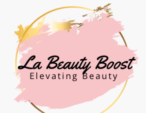
After experiencing several microdermabrasion treatments, I noticed how my skin would feel both refreshed and incredibly sensitive. While the treatments left my skin looking soft and radiant, I soon realized that without the right care, my skin’s barrier could easily become compromised. Through trial and error, I learned that with the right steps and products, I could protect my skin from further irritation and allow it to heal properly. If you’ve recently had a chemical peel or another exfoliating treatment, this guide will walk you through how to care for your skin and restore its natural strength, so you can enjoy long-lasting, healthy results.
*As an Amazon Associate, I earn from qualifying purchases. This means I may earn a small commission if you purchase products through my affiliate links at no extra cost to you.*
Understanding Your Skin Barrier
Your skin’s barrier (also known as the stratum corneum) is the outermost layer of skin that acts as a protective shield against harmful elements like pollutants, UV rays, and bacteria, while also locking in moisture. After undergoing chemical peels or similar treatments, your skin barrier can be temporarily weakened. This makes your skin more susceptible to irritation, dehydration, and sensitivity. That’s why it’s crucial to focus on repairing and reinforcing your skin barrier during the recovery phase.
Step 1: Cleanse Gently and Avoid Harsh Exfoliants
After a chemical peel or exfoliating treatment, your skin will likely feel dry, tight, and even a little irritated. This is when you need to treat your skin with extra care, especially when cleansing.
What to Use:
Opt for hydrating, non-foaming cleansers that contain soothing ingredients like glycerin and aloe vera. These will help clean your skin while preserving moisture.

CeraVe Hydrating Cleanser: This dermatologist-developed cleanser is ideal for post-treatment care. It’s formulated with ceramides, hyaluronic acid, and glycerin to help hydrate and restore your skin’s moisture without stripping it. The creamy, non-foaming formula is perfect for sensitive, compromised skin after treatments like chemical peels or microdermabrasion.

Aveeno Calm + Restore Facial Cleanser: Designed for sensitive skin, this non-foaming, milky cleanser is enriched with nourishing oat and feverfew to soothe and restore the skin’s natural balance. It cleanses gently without irritation, leaving the skin feeling soft, hydrated, and calm. The formula is fragrance-free, hypoallergenic, and helps to maintain the skin’s moisture while supporting its protective barrier.
What to Avoid:
Stay away from harsh exfoliating scrubs or cleansers with salicylic acid, benzoyl peroxide, or alcohol, as they can exacerbate irritation and slow down your skin’s recovery.
Step 2: Use a Hydrating Toner or Essence
Once your skin is clean, it’s time to hydrate. Applying a toner or essence helps restore moisture and balance your skin’s pH levels. This is especially important if your skin has undergone exfoliation and is now in need of hydration and soothing.
What to Use:
Look for toners or essences with hyaluronic acid, glycerin, or rose water. These ingredients draw moisture into the skin and help calm inflammation.

Klairs Supple Preparation Unscented Toner: This soothing, alcohol-free toner contains amino acids and hyaluronic acid, both of which are known for their ability to replenish lost moisture and help maintain the skin’s hydration levels. This toner is ideal for those with sensitive skin, providing gentle hydration while balancing the skin’s pH and calming irritation.

Hada Labo Gokujyun Premium Hydrating Lotion: This essence is packed with hyaluronic acid, which helps to deeply hydrate and lock in moisture. It’s especially beneficial for dry, dehydrated skin after exfoliating treatments. The formula is designed to penetrate deeper layers of the skin, helping to restore moisture and leave the skin plump and refreshed.
What to Avoid:
Avoid toners with alcohol or fragrances, as they can be drying and irritating to newly treated skin.
Step 3: Apply a Nourishing Serum
After your skin has absorbed some hydration, it’s time to focus on repairing and reinforcing the skin barrier. Serums with ingredients like ceramides, niacinamide, and peptides are excellent for soothing inflammation and supporting the skin’s repair process.
What to Use:

La Roche-Posay Cicaplast Baume B5: This reparative balm is perfect for sensitive and post-procedure skin. It contains panthenol (Vitamin B5), madecassoside, and shea butter to promote skin recovery and restore moisture. The lightweight yet rich texture creates a protective barrier to soothe irritated skin while stimulating the healing process. It’s also fragrance-free, making it ideal for delicate skin after chemical peels or microdermabrasion.

Paula’s Choice 10% Niacinamide Booster: Niacinamide is a powerful ingredient known for its anti-inflammatory and barrier-strengthening properties. This serum helps reduce redness and calm irritation, while improving the appearance of pores and uneven skin tone. The 10% niacinamide concentration supports skin barrier function, promoting a healthier complexion. Enriched with antioxidants, it helps protect the skin from environmental damage, making this booster ideal for post-treatment skin in need of healing and hydration.
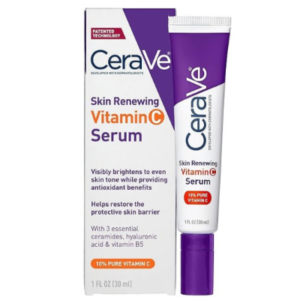
CeraVe Skin Renewing Vitamin C Serum: Vitamin C is not only great for brightening the skin but also helps to protect the skin from environmental stressors. This serum contains ascorbic acid (a potent form of Vitamin C) and is packed with ceramides that help to restore the skin barrier. Together, these ingredients provide both repair and protection, making it an excellent choice for post-treatment recovery.
What to Avoid:
Avoid retinoids and AHA/BHA exfoliants, as they can further irritate sensitive skin post-treatment.
Step 4: Use a Rich, Barrier-Repairing Moisturizer
A well-hydrated skin barrier is crucial for healing. Your moisturizer should be rich in emollients like ceramides, squalane, and fatty acids to help lock in moisture and prevent dehydration.
What to Use:

CeraVe Moisturizing Cream: This classic moisturizer contains a combination of ceramides, hyaluronic acid, and glycerin, which are all key ingredients in barrier repair. The thick, non-greasy formula is perfect for locking in moisture without leaving the skin feeling heavy or oily. It helps restore and maintain your skin’s natural barrier while keeping it hydrated for longer periods.
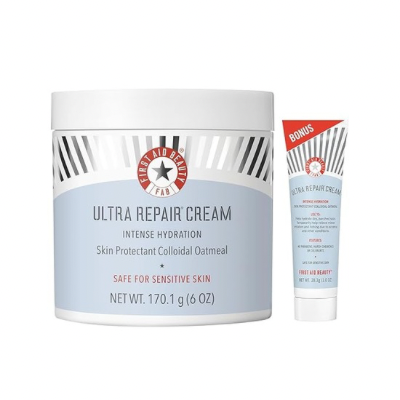
First Aid Beauty Ultra Repair Cream: Infused with colloidal oatmeal, shea butter, and allantoin, this deeply hydrating cream is designed to soothe and repair dry, distressed skin. Its rich yet non-greasy formula helps calm irritation, reduce redness, and strengthen the skin barrier, making it an excellent choice for post-peel recovery and sensitive skin in need of extra nourishment.
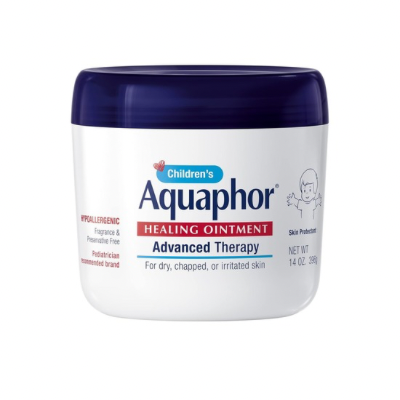
Aquaphor Healing Ointment: For extremely dry or cracked skin, this ointment is perfect for adding a protective layer that seals in moisture and accelerates the healing process. It contains panthenol and glycerin to soothe irritation and provide deep hydration.
What to Avoid:
Avoid moisturizers with fragrance or alcohol, as these can irritate your skin, prolonging the healing process.
Step 5: Protect Your Skin with Sunscreen
After any exfoliating treatment, your skin becomes extra sensitive to the sun. It’s essential to use sunscreen to protect it from harmful UV rays, which can lead to pigmentation issues and further damage.
What to Use:
Choose a broad-spectrum sunscreen with SPF 30 or higher, and look for physical sunscreens containing zinc oxide or titanium dioxide.
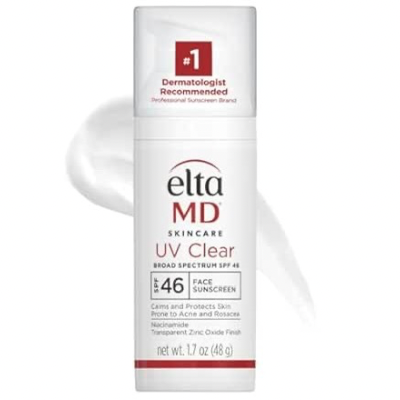
EltaMD UV Clear Broad-Spectrum SPF 46: This sunscreen is specifically designed for sensitive skin, making it perfect for post-treatment care. It offers broad-spectrum protection against UVA and UVB rays while soothing the skin with niacinamide. Its lightweight, non-comedogenic formula is suitable for acne-prone skin as well, providing protection without clogging pores.
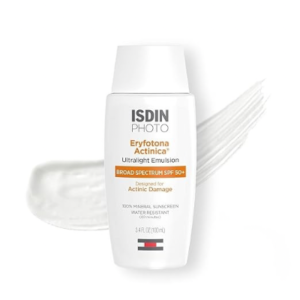
ISDIN Eryfotona Actinica Ultralight Emulsion SPF 50+: This high-SPF sunscreen offers excellent protection while supporting skin repair. It’s infused with DNA repair enzymes and vitamin E to help reverse sun damage, making it ideal for post-treatment recovery. The formula is lightweight, fast-absorbing, and works well even for sensitive skin.
What to Avoid:
Avoid sunscreens with chemical filters, which can irritate post-treatment skin.
Step 6: Give Your Skin Time to Heal
Patience is key during your recovery process. Give your skin time to repair itself, and refrain from applying too many products or picking at any peeling areas. Healing takes time, and gentle care will help speed up the process.
Tips for Faster Healing:
- Drink plenty of water to keep your skin hydrated from the inside.
- Avoid hot showers or excessive sweating to prevent further irritation.
- Keep your skincare routine simple for the first few days, focusing only on hydration and repair.
Conclusion:
Proper barrier repair is essential after chemical peels or other exfoliating treatments. By following these steps and using the right products, you can support your skin’s natural healing process, avoid unnecessary irritation, and enjoy the glowing results of your treatment. Remember, it’s all about being gentle, consistent, and patient with your skin.
If you found this guide helpful, don’t keep it to yourself! Share this blog with your friends and family who are also looking
My Other Blog
How to Prevent and Treat Flaky Skin in Winter
